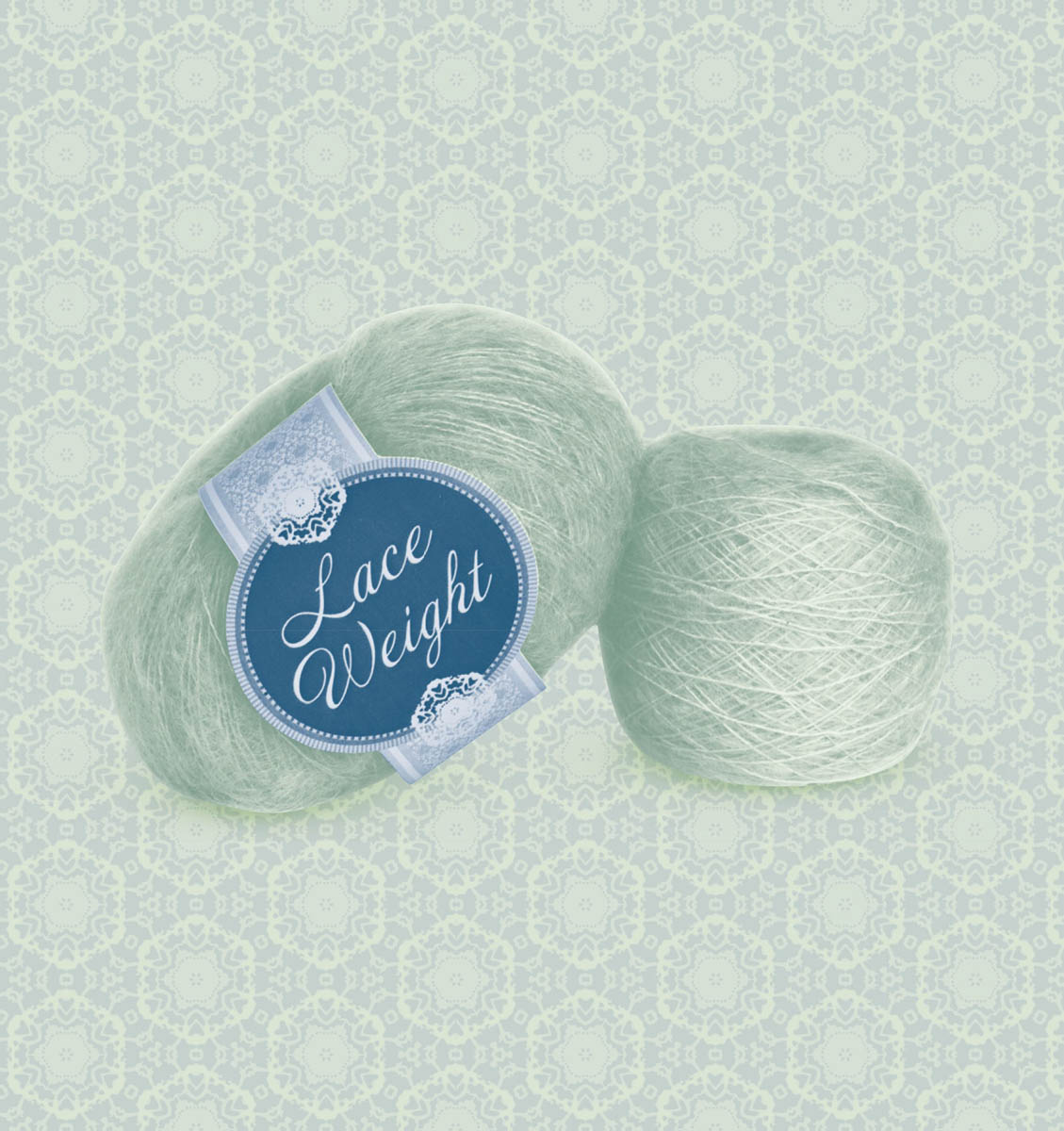

Designed by Myrna A. I. Stahman
This lovely scarf is knitted with Buffalo Gold yarn, and it is softer than soft. The lovely brown is a natural bison color and would perfectly complement your camel dress coat.
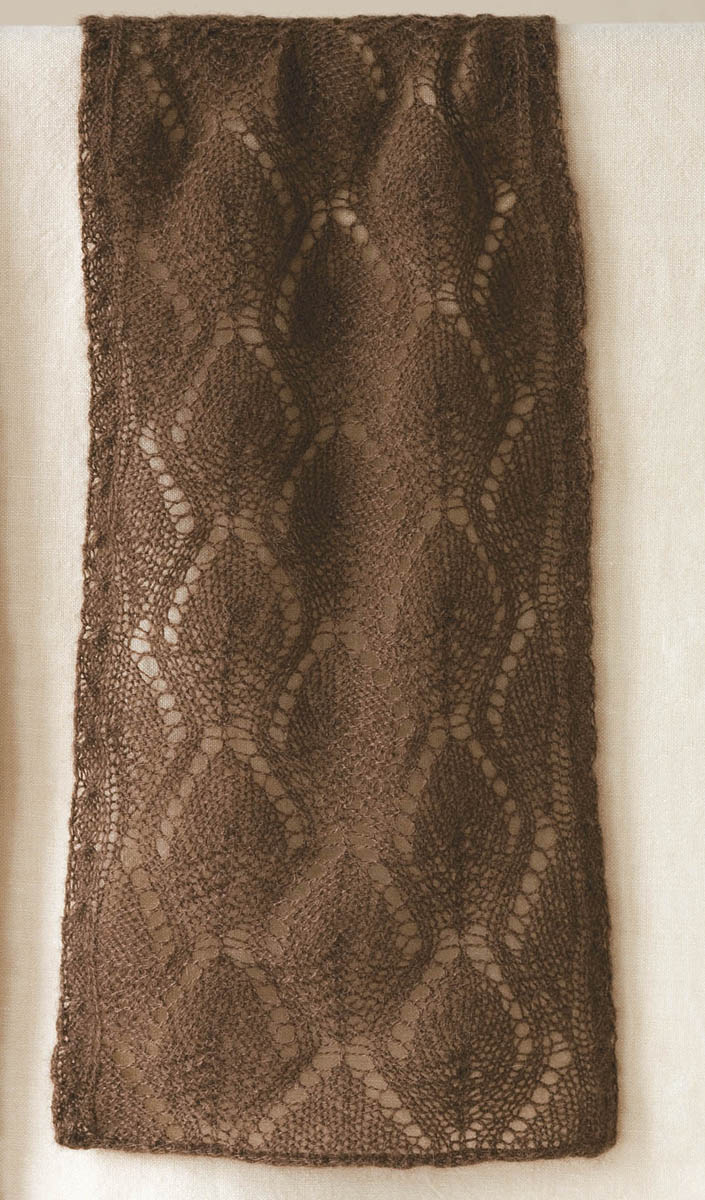
Designed by Jolene Treace
The lace stitch used here is similar to the five petals of a violet. The scarf is knitted with a silk-and-cashmere blend and has an edging that is applied to the main body of the scarf as it is knitted.
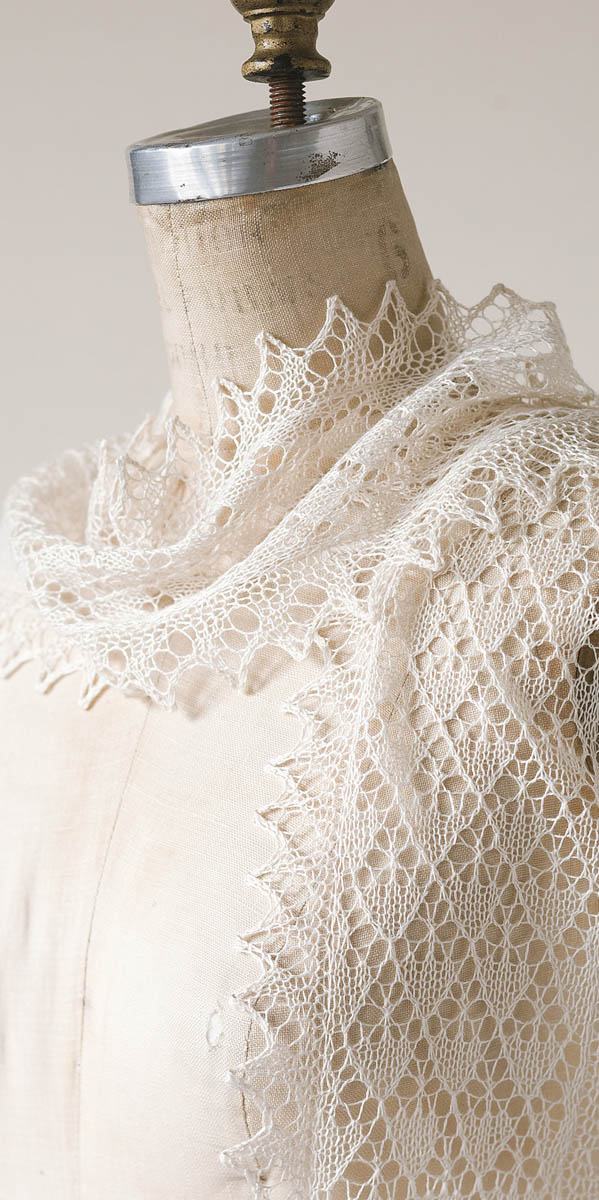

Designed by René E. Wells
Three triangles knitted simultaneously combine to make this lovely shaped “shawlette.” It is light and airy, making it appropriate for any occasion in any weather. Who would have thought buffalo could be so versatile?
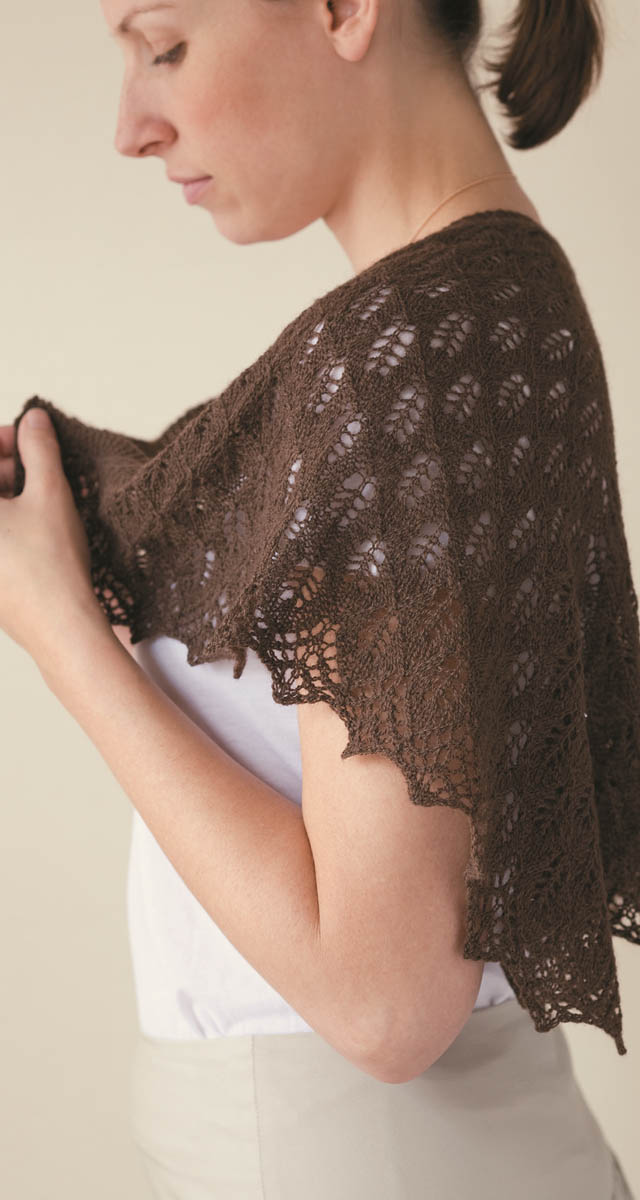
Designed by Myrna A. I. Stahman
This lovely lace scarf is knitted in a Pygora-merino blend. If you’ve ever seen a Pygora goat, you can imagine what this yarn feels like. The scarf begins and ends with a seed stitch border and has a six-stitch seed stitch border at each side.
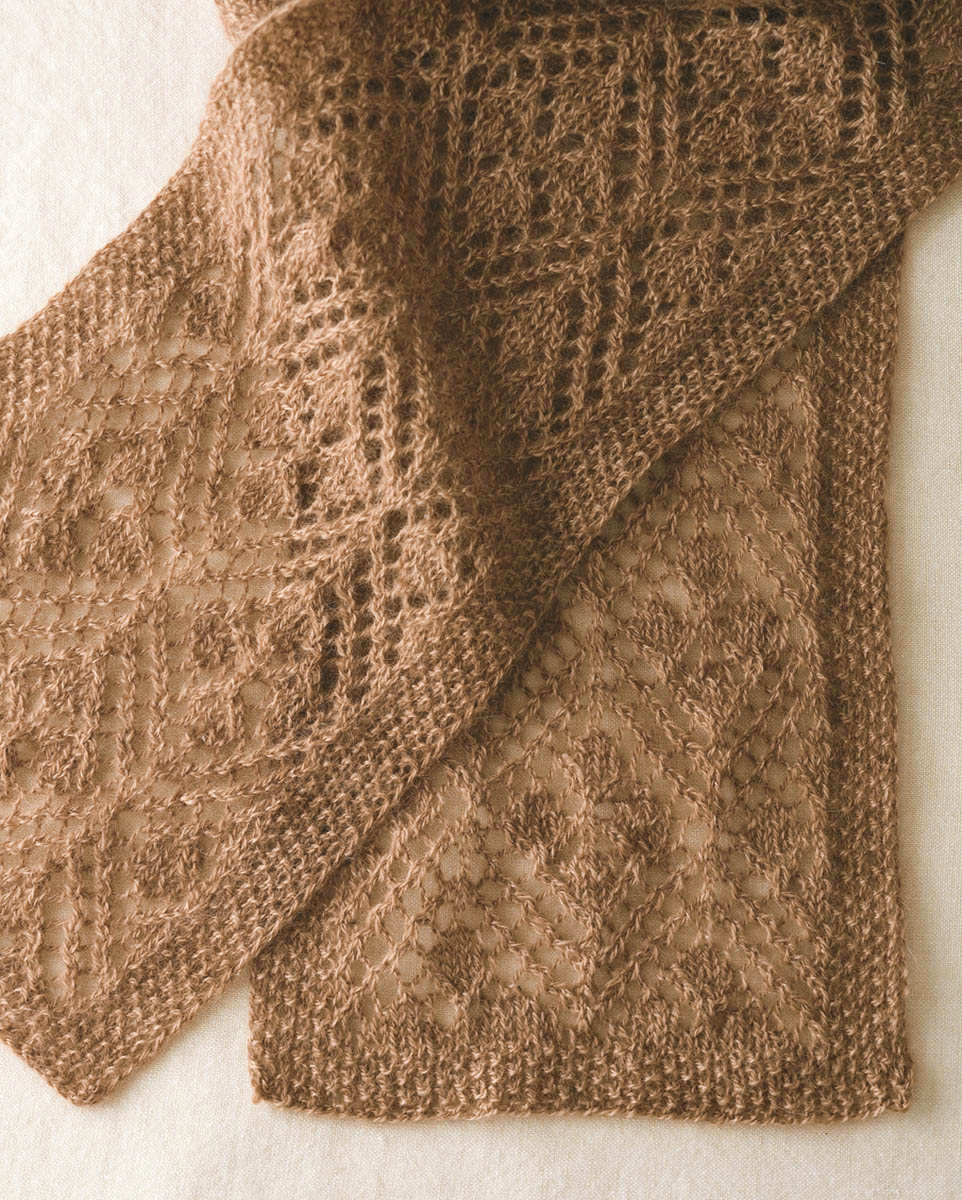
Designed by Judith Durant
If you can imagine it, you can knit it! Worked in a yarn that is the height of luxury — a blend of cashmere and silk — this chic jewelry doubles as wrist warmers. One ball of this luscious yarn covers about 10 bangles.
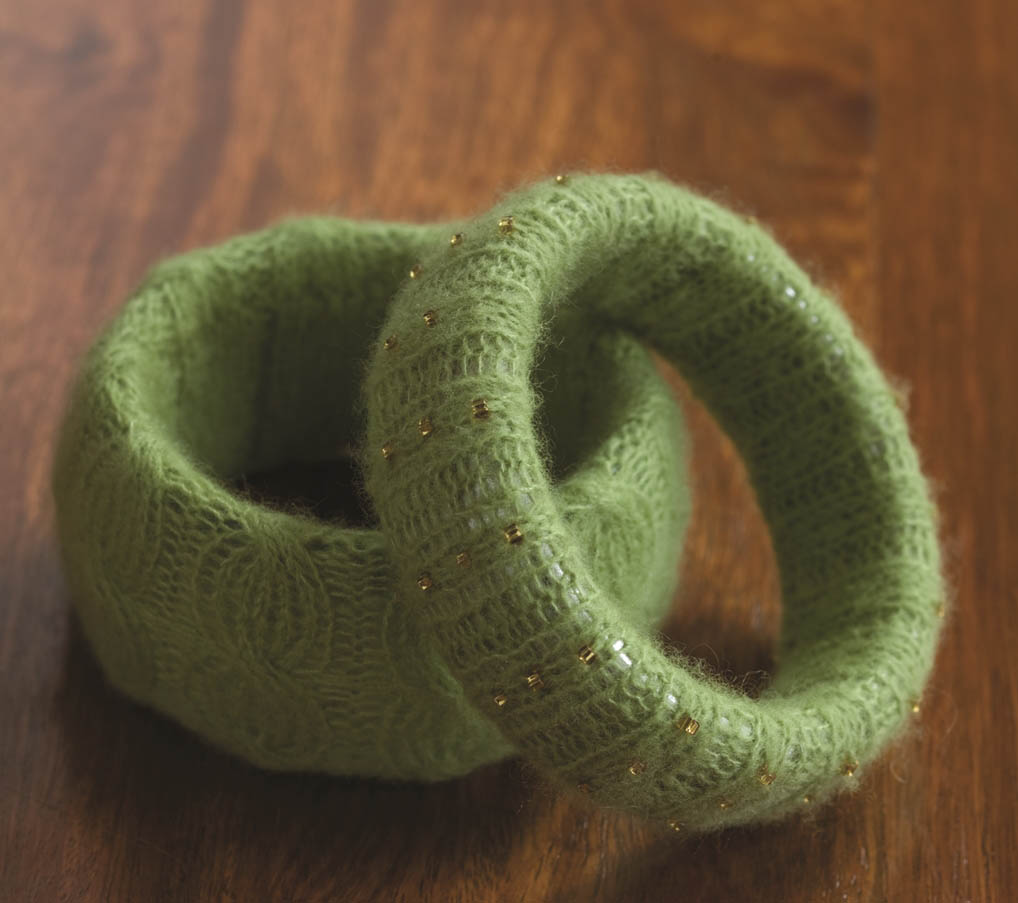
Rounds 1–5: *K6, P2; repeat from *.
Round 6: *C6F, P2; repeat from *.
Rounds 7–10: Repeat Round 1.
Repeat rounds 1–10 for Pattern.
Rounds 1–3: K3, P2; repeat from *.
Round 4: *K1, PBS, K1, P2; repeat from *.
Repeat rounds 1–4 for pattern.
Designed by Mary McGurn
The vicuña is a relative of the llama and the alpaca, residing exclusively in South America. Vicuñas produce extremely fine wool; it is softer and warmer than that from any other animal, having a diameter that is less than half that of the finest sheep’s wool. Because the vicuña produces only about 1 pound of wool per year, among other reasons, the yarn is very expensive. So here’s a small and simple scarf that can be knit with just 1 ounce. But the pattern’s reversible, so you get double the pleasure.
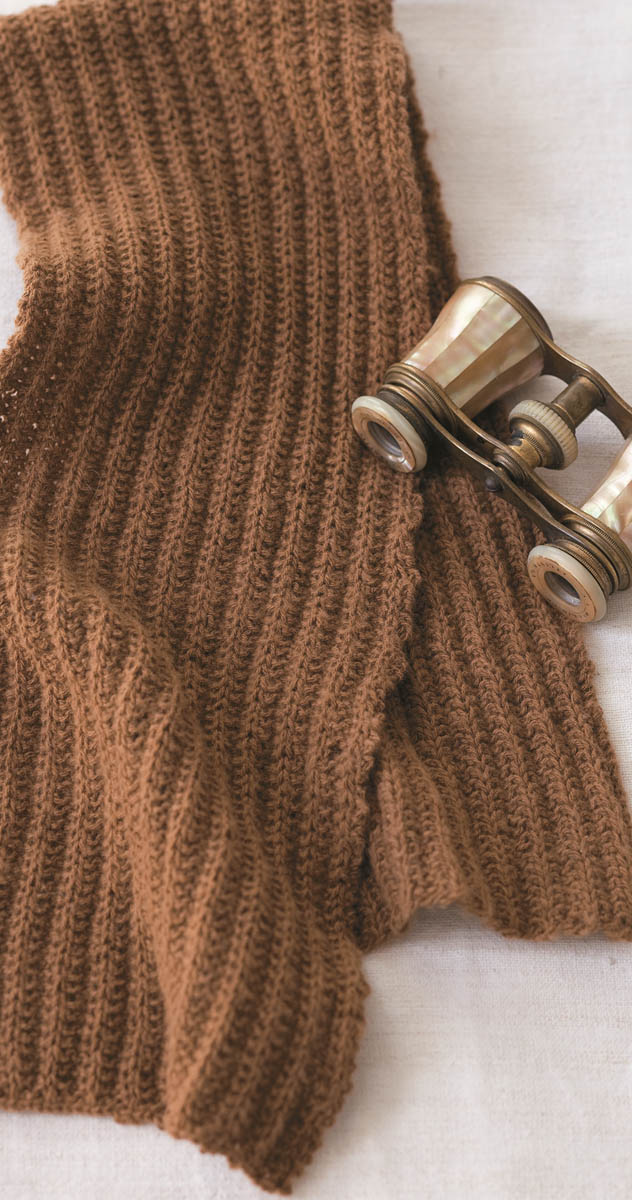
Row 1: K3, *slip 1 wyif, K3; repeat from * to end of row.
Row 2: K1, *slip 1 wyif, K3; repeat from * to last 2 stitches, slip 1 wyif, K1.
Repeat rows 1 and 2 for pattern.